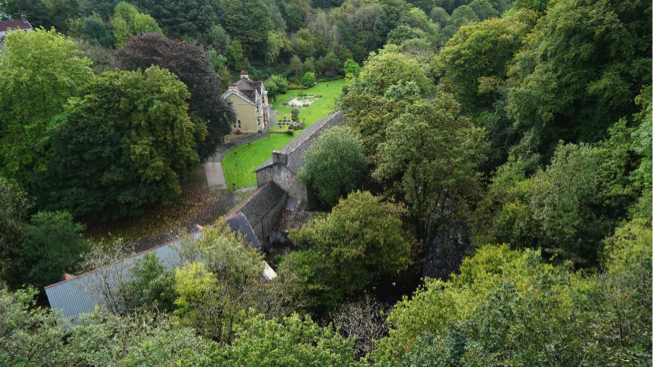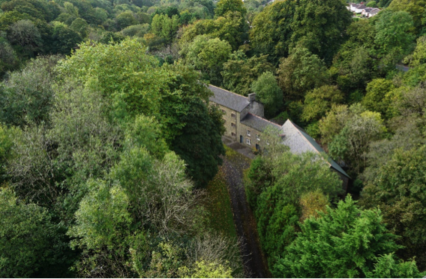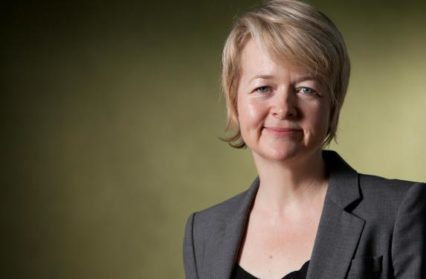Our Artist in Residence for October, clare e. potter, continues her journey along the river with her piece, Dewch Gyda Ni, Come With Us. Throughout 2017 these artists, including clare e. potter will take a leading creative role in what Wales Arts Review publishes, centring their skills on a challenging project over the course of a month. We were inundated with applications, receiving hundreds of emails about the positions, and it was no easy task whittling down all that talent to this final eleven. Our team of six editors debated long into the night, and in the end, we decided on a collection of people who we most want to work with, and whose work excites us. We think you will be excited by them too.
Where do I begin to tell you about Dr Elin Jones? An eminent historian who worked as Education Officer for Archaeology in the National Museum and a teacher of many. She has two Master’s Degrees (one from Oxford University) and her PhD’s focus was Llywarch ap Llywelyn. Elin is chair of HAFAL, one of Wales’ leading mental health charities. Her contributions to the mental health sector and history were recognised when she became one of the Gorsedd of the National Eisteddfod. Elin is one of the last speakers of Gwenhwyseg, a Welsh dialect of South East Wales. Therefore, you’ll hear Elin say ‘Ne’ instead of ‘Na’, ‘Cenol’ instead of ‘Canol’, ‘Mes’ instead of ‘Mas’.
More than all this, she is my mam’s friend and so I was lucky to have lunch with them both. I wanted to interview Elin, not only because of her historical knowledge but because she was born and raised in Ystrad Mynach, right on the Rhymni River.
The interview opens with Elin reciting a triban (an ancient, strict metered, four-line poem originating from the Glamorgan areas of South Wales)
Mae Afon Rhymni dirion
Yn llifo llifo yn gyson
Er gwelid llawer tro ar fyd
Yr un o hyd yw’r afonThe gentle Rhymney River
Flows steadily, steadily
Though it has seen many changes in the world
The river stays constant

The Maesycwmmer Wool Mill, built-in 1850 for Rev. John Jenkins. Photographed
from the Hengoed Viaduct (or Maesycwmmer Viaduct, depending which side
you live on!). The river bends around the curve of the mill.

Elin’s hen-mamgu (great grandmother) used to sell her sheep fleeces here as
this was the only honest miller for miles. It was at one time a corn mill and the
place the Reverend John Jenkins wrote and published his books.
We speak about many things relating to the mill, to the villages on either side, but of course, our talk settles on Yr Iaith Gymraeg, or Yr Iaith Gymreg as Elin would say. She tells me how her family were judged harshly for raising her in the Welsh language, warned that it might hold her back; thankfully, her parents stood firm. Elin’s youngest uncles though lost the opportunity to speak Welsh when her grandparents had decided to send them out into the world with the English arrow in their bow.
In many ways, Welsh was an underground language in this area. Her uncles picked up their native tongue in the chapel of course, but also in the mines where politics and culture were shared in Welsh. Elin’s uncle told her of a clocsiwr, a clog dancer, who while they were taking their break at the coal face, began dancing while singing an old triban in defiance of the non-Welsh speaking mine owners:
Nhw a’u ffowls a’u gwyddau
a’u te a’u siwgwr gwyn
a ninnau’n slafo’n perfedd
i gadw’r diawled hyn.Them with their chickens and geese
and their tea and white sugar,
while we slave our guts out
to keep those devils rich.
Eight years ago, I went to the Smithsonian Folk-Life Festival to read my English language poems along with Welsh language poets (Gwyneth Glyn, Ifor ap Glyn, Aneirin Karadog, Jon Gower, Ceri Wyn Jones); the Americans came in their droves to listen to these poems in Welsh. They seemed to connect deeply to their sounds, intonations, the energies and intentions that the Welsh language poets had crafted into these ‘foreign’ words. Therefore, I hope that you will listen to the recording, regardless of your level of Welsh. This dialect of our language that Elin speaks is (in some regards) almost lost to us. You must hear it. She is knowledgeable about almost any subject but is passionate that others recognise that what we have in Wales is a ‘Uniquely Inclusive’ language (she quotes Mererid Hopwood here). So let yourself be included, let Elin’s river song of speech fill your ears.
The best bit of course is the last bit. After we have eaten our soup and talked for over an hour, Elin looks wistfully and tells me something quite beautiful, a poem of thought. She says that I am a new Cymraes; I have chosen to be Welsh-speaking, whereas she was raised in the heart of our national language. She admires people who want to learn it ‘The readiness is all, cariad,’ she says. My Welsh is so different to hers, the Welsh of the future while hers is the Welsh of the past. There is both loss and hope in that. Language needs to evolve. I have much work to do for my limited Welsh to develop but it can only do so because of the Welsh that has come before, and with the love and support of people like Elin Jones who want the language to continue.
As our conversation draws to an end, Elin compares this language we share to the river—’changing, staying the same, flowing on, endlessly different but still the same river.’ And though it is lamentable that her way of expressing Welsh is coming to its end, it has nourished and allowed for a new wave of dialect. And, yes we speak our Welsh differently, but it is this, our one language that binds us.
As my mother just phoned to say . . . no matter if the river water is different, it touches the same stones. Mam’s right, Gwenhwyseg might not be spoken in our Eisteddfodau, at the local rugby match or on one of our brilliant Welsh dramas, but it is there under the tongue, melting into our words, feeding the language of tomorrow.
Link:
Hafal: http://www.hafal.org/
This piece, Dewch Gyda Ni, Come With Us by clare e. potter is part of the Artists in Residence series.












